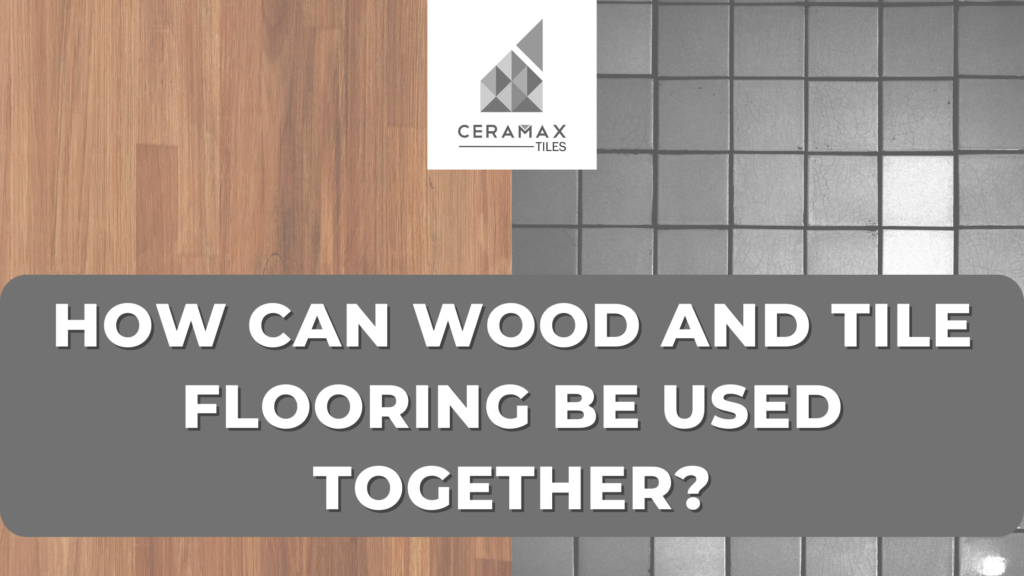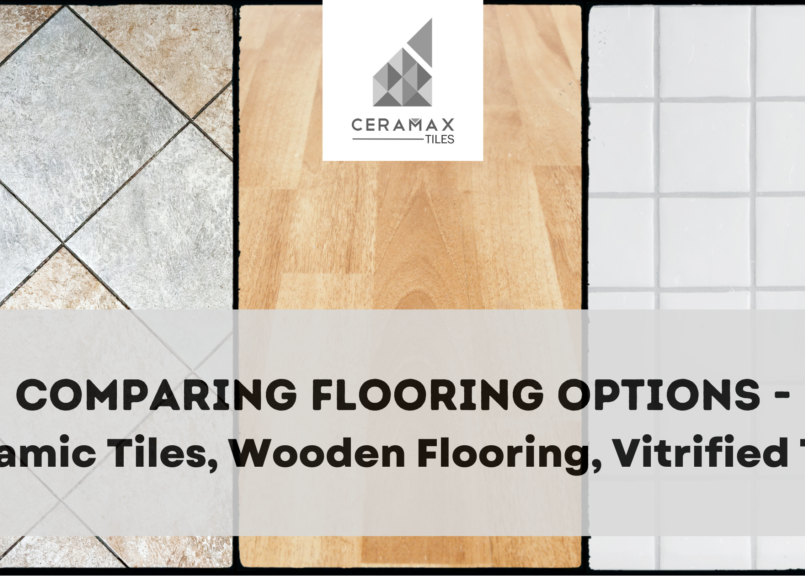How Can Wood and Tile Flooring Be Used Together?
Walls are being torn down by the advancement of interior design trends, and architects have thus been favouring open spaces for a while. The tendency to open up interiors has prompted new strategies for defining spaces. In fact, a lot of people today decide to separate apart their rooms using different types of flooring. You cannot choose between tiles and hardwood while remodelling or creating your home. When the two materials work so well together, there is no need to make a decision. However, let’s take the time to comprehend the potential interactions between the various parquet and tile surfaces and colours, as well as with the other decor items. Here are a few advice.
Read Also- CERAMIC VS VITRIFIED TILES: WHICH ONE TO CHOOSE AND WHY?
Combination of wood and tile floors: a lovely method of organising areas
The lack of walls in current interior design trends forces designers to reconsider how flooring may be used to organise open areas. Certainly, the general design of the house is greatly influenced by the floors. Given the countless variations in tile styles, textures, and colors, it is now possible to give each room a distinct personality.
The goal of a first design concept is to divide spaces smoothly. Wood and tile floor choices, which connect the two spaces and give life to an excellent finish, offer transitions a powerful decorative strength. This could be a great way to divide an open-concept kitchen from a living room or dining area, or to divide a bathroom from a bedroom, for instance. Of course, there are other options besides interior partitions that can be used to meld the interior and exterior of the house with its surroundings. This association gives rooms personality without taking up any additional space by visually emphasising them.
Then, a combination of wood flooring and tiles can also function in the same area. It could seem that kitchens are the best spaces for a successful fusion of these two materials. In terms of layout, tiles can be placed close to important features like sinks or stoves to protect the cooking area, while parquet can contrast with it or work in harmony with it depending on the materials you select.
Another justification for combining tile and wood flooring is decoration. Beyond this useful linkage, the combination of warm wood and fresh tiles gives it tremendous ornamental potential. Options are limitless and can result in stunning creations or simpler but still intriguing ones.
Due to the usage of transition strips, for example, both coatings must lay at the same level when applied. After noticing the difference in thickness between the two materials, another option may be to apply an undercoat underneath one of them. However, wood-look floor tiles can be selected so that they are the same thickness as the tiles with which they are combined.

What kind of tile and wood flooring should I choose?
It takes extra care to choose the right colour and texture when combining tiles and wood flooring so that it reflects your style. You can experiment with contrasting colours and shapes or, on the other hand, choose complementary materials.
For instance, hexagonal tiles in the first scenario provide a unique and interesting optical illusion! It allows for the creation of lovely cuts that make the combination of tiles and wood floors geometric and dynamic. Ceramic cement tiles, whether colored, patterned, or white, bring obviously some character if you want to create a contrast with a floor that looks like a huge mosaic. Additionally, their diminutive size permits all fantasies.
For those of you who like discretion, combining tile and wood flooring can transform the appearance of a straightforward frieze tile border to stylishly and delicately divide sections. The mix of a wood and tile floor is fantastic if you want to gradually break up a room’s monotony. What is one of the best concepts for a modern look? To highlight the presence of a certain element, such as the fireplace in the living room, the bathtub or the shower in the bathroom, or the kitchen island, use marble look tiles or light tiles to create a tile carpet.
Why not combine natural wood and stone look tiles for a setting that is entirely natural? Natural parquet, like oak, is comfortable, and ceramic stone has a noble identity, which blend elegantly together. The two materials combine to create a true homage to nature that gives any space personality and style.
What about tiled walls and wood floors?
You should not overlook selecting wall coverings that match the room’s flooring for a unified interior design. You could use a combination of wood and tiles on these two surfaces if you prefer the concept of combining floors and walls!
Every space, from bedrooms to living rooms and kitchens, benefits from the option of installing, for instance, tiles on the walls and wood on the floors. It goes without saying that you should know how to care after your parquet based on its intended use. In order to take advantage of all the benefits of ceramic, another option is to choose wood-look tiles.
This method of combining tile and wood flooring gives the space a customised appearance and makes it possible to isolate certain parts and highlight them because the floor is not structured. For instance, our bathrooms can end up being the ideal setting for the union of beauty and toughness. In order to structure the space, porcelain stoneware wall tiles may be installed behind the bathtub or on the shower walls.
At the same time, the tiles give the space a unique touch. Depending on your taste, you can choose from concrete-like tiles for an industrial aspect, ceramic wallpaper for a powerful decorative effect, or authentic ceramic cement tiles to add colour. Why not flip it by installing floor tiles and wall tiles with a wood look? Suppose your home could accommodate all of your ideas. So, let your imagination run wild!





